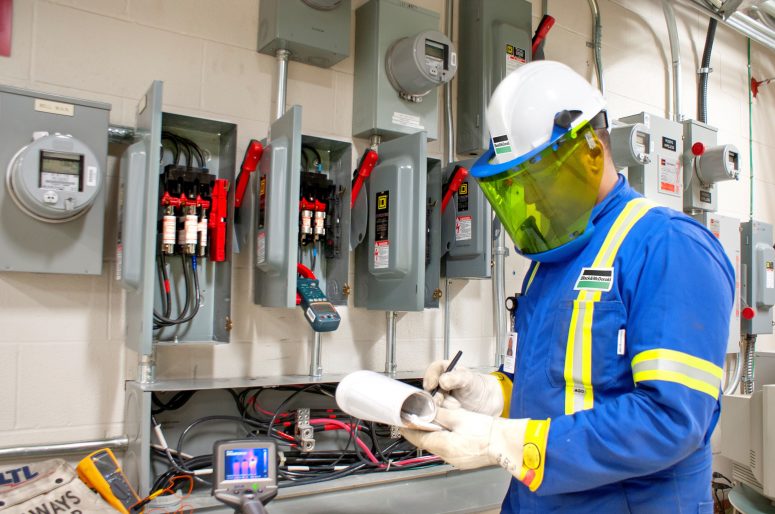Thermography is a method of inspecting electrical and mechanical equipment using specialized infrared cameras. By producing detailed images and temperature profiles of specific pieces of equipment, thermal imaging measures the infrared energy of an object’s surface, alerting facility managers to any potential threats.
Aidan Mabbott, Division Manager with Black & McDonald British Columbia Service, has seen all too often what can happen when building electrical systems aren’t routinely scanned. “In dusty environments, dirt and debris can build up on the electrical components, which can lead to a short circuit condition,” he says. “This often creates a spark or arc, which can ignite and cause a fire.”
For facility owners and operators, it’s nice to know that early detection and intervention can greatly minimize this risk.
How the technology works
Though infrared technology has been around for decades, thermal imagers used in building inspections have only been prevalent for about 15 years—and the technology has come a long way.
“Today’s imagers are flexible and detail-oriented, and they are portable enough to take anywhere,” says Mabbott. “Equipped with rotating screens that can deliver real-time temperature graphs, we’re able to produce professional reports for our clients in a matter of minutes.”
Given most system components show an increase in temperature when malfunctioning, today’s high-powered infrared cameras enable qualified inspectors to see the heat signatures associated with high electrical resistance before the circuit becomes hot enough to cause an outage or explosion.
There can be several reasons for a malfunction, but David Carter, an electrician with Black & McDonald, says the most common root causes include loose connections, aging equipment, and overloaded circuits. Equipment that builds up heat can also be an indication of poor installation or that cooling systems are not functioning properly.
“Whatever the reason for the increase in temperature, detecting it early can lead to substantial cost savings for the facility operator, not to mention peace of mind,” he says.
How often should thermal imagers be used?
Though recommended as part of a routine maintenance program, there is no ‘one size fits all’ approach to thermal imaging—it all depends on the type of facility and the age of the equipment.
“We often perform thermal scans on office electrical panels annually, and industrial equipment quarterly,” says Carter. “But there are many components in our electrical, plumbing and HVAC systems that have benefitted from regular thermal image scans.”
The best approach, adds Mabbot, is a custom approach.
“At Black & McDonald, we look at several items before proposing a proactive maintenance program for our clients,” he says. “Some of these items include: type of business, age of equipment, run duration of machinery and the client’s budget.”
For electrical panels, Black & McDonald will often propose two options—the first being a basic surface scan of the breakers to see if there are any obvious issues with overheating. “If we discover anything abnormal we would then remove the covers for a closer look as to the cause,” he says.
The second option is a more in-depth inspection involving the complete removal of all covers to expose all of the electrical components. “We then scan all lugs and terminals, check that all wires are tightly connected and measure voltages to ensure that everything is as expected.”
When performing a thermal image scan at a building for the first time, Carter recommends his clients opt for the the in-depth inspection as an “initial tune up” and overview of the equipment. Subsequently, surface scans may be all that are required given most of the issues will have been identified up front.
The bottom line is this: electrical outages and fires can be costly, disruptive, and dangerous. Taking the right steps to prevent them is in everyone’s best interest.
For more information on Black & McDonald’s thermal imaging services, please visit www.blackandmcdonald.com







